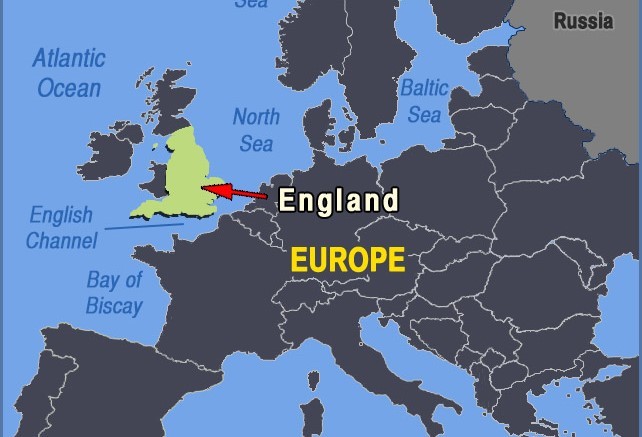Top 10 Famous and Beautiful Temples in the UK
 |
| Top 10 most famous temples in England |
| Contents |
Indian Hindus make up the largest religious minority in London, one of the world's most stunning cities. London is home to a wide variety of religious communities, as seen by the city's 150 or so temples. People of all backgrounds are able to come together in worship and fellowship at these temples.
Temples also serve as communal centers for Hindus, hosting marriages, language classes, religious activities, festivals, and even Yoga. Some of London's most well-known Hindu places of worship are the Swaminaryaran Temple, the Balaji Temple, and the Murugan Temple (UK).
Take a look at Knowinsiders.com's top 10 list to learn more about these well-known and stunning temples:
What are the Most Famous Buddhist Temples in England
10. Shri Venkateswara Temple
 |
| Shri Venkateswara Temple - Photo: N Sethia Foundation |
One of the biggest active Hindu temples in Europe is the Shri Venkateswara (Balaji) Temple. It is devoted to a manifestation of the Hindu god Vishnu in the Vaishnava religion. The temple is situated northwest of Birmingham city in Tividale, West Midlands, England, between the communities of Tipton and Oldbury. The Tirupati Venkateswara Temple in Andhra Pradesh, India, served as a source of design influence for the temple. In August 2006, the temple was dedicated and made publicly accessible.
In this temple, Venkateswara, a well-known manifestation of Vishnu, is the main deity. Shrines dedicated to his wife Padmavati are also located within the main temple complex (Alamelu). Other significant Hindu deities with temples within the temple include Hanuman, Shiva, Karthikeya, Ganesh, Ayappan, and the Navagraha.
The temple operates the Balaji School for Culture & Education, which offers classes on music, the Vedas (ancient Hindu scriptures), and other subjects as well as a spiritual and cultural basis for kids. The community hall of the temple is sizable. The temple also offers free matrimonial assistance by assisting people in finding compatible spouses.
A sizable community center, a gatehouse, and a Gandhi Peace Center are among the on-site amenities. The temple offers free meals to tourists through its annadhanam services, which are supported by contributions. The temple serves more than only the needs of Hindus, receiving up to 1500 tourists throughout the workweek and 2500 visitors on weekends. It hosts numerous cultural events, welcomes school trips, and offers classes and teaching sessions in Vedic studies and Sanskrit to young people. It also receives more than 100 visits from special interest groups from across the UK and Europe.
The temple is a reputable charity in the UK and is a non-profit organization.
9. Shree Geeta Bhawan
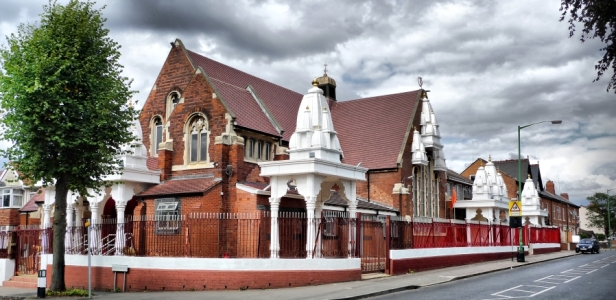 |
| Shree Geeta Bhawan - Photo: Shreegeetabhawan |
The Shree Geeta Bhawan Mandir is the first Hindu temple in the Midlands of England. It is situated at 107-117 Heathfield Road, on the corner of Brecon Road, on the border of the Handsworth and Lozells districts of Birmingham.
The building was the former St George's Presbyterian Church and was originally designed by J.P.Osborne in a cruciform shape in 1896, however was reopened as the Shree Geeta Bhawan Mandir in 1969.
Originally, services were held at 32 Hall Road, Birmingham B20 2BQ.
The Mandir has a daily Aarti at 11am and 7pm and has weekly Poojas for Balaji on Sunday mornings, and Durga Maa on Tuesday evenings.
8. Lakshmi Narayan Hindu Temple
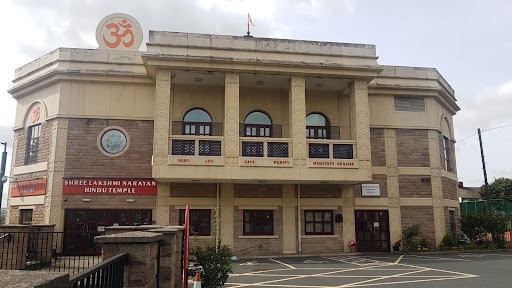 |
| Lakshmi Narayan Hindu Temple - Photo: Faith UK |
In the 1950s, 60s, and 70s, most Hindus came to the UK to work and support their families. In the 1970s, most Hindus came to the UK from Punjab, Gujarat, and East Africa. They lived in poverty and struggled to make ends meet in the beginning. It was survival. They worked enormous hours to establish themselves in the U.K. Most had young families. After settling in the UK, they needed a location to assemble for social, cultural, and religious purposes. If they didn't act, they and their children might lose contact with their religion and culture.
They founded the Hindu Cultural Society of Bradford in 1968 and adopted a constitution to promote Hinduism and protect the Hindu community. They searched for a worship hall location. They tried to find a spot to turn into a temple or worship hall, but they failed. The Hindu community bought a terraced house in Bradford 7 and set up a makeshift temple. They then held Sunday Kirtan at Hindu community members' homes to generate funds for a larger space.
The Bradford Hindu Cultural Society bought 311-321 Leeds Road in July 1973. The Bradford Metropolitan Council approved this Hindu worship center for Bradford and the surrounding area. Mr K.K Mittal, Mr Tirth Ram, Mr P.N Chawla, Mr Saxena, and Mr Bholla personally guaranteed the bank loan to buy this building. To develop a worship space, the community worked hard to clean this structure.
On August 3, 1974, Bradford's first Hindu place of worship, Murti Sataphan, was held at 321 Leeds Road. Bradford Hindus rejoiced. The Yorkshire Art Council funded five exquisite paintings by Shri Shanti Dutta and Prof P.B Lal for the new Temple. The Hindu Cultural Society of Bradford realized the community needed a larger purpose-built temple as it grew. From 1980 until 2000, numerous Hindu Community members worked for the Hindu Cultural Society of Bradford to promote Hinduism and protect Hindu interests.
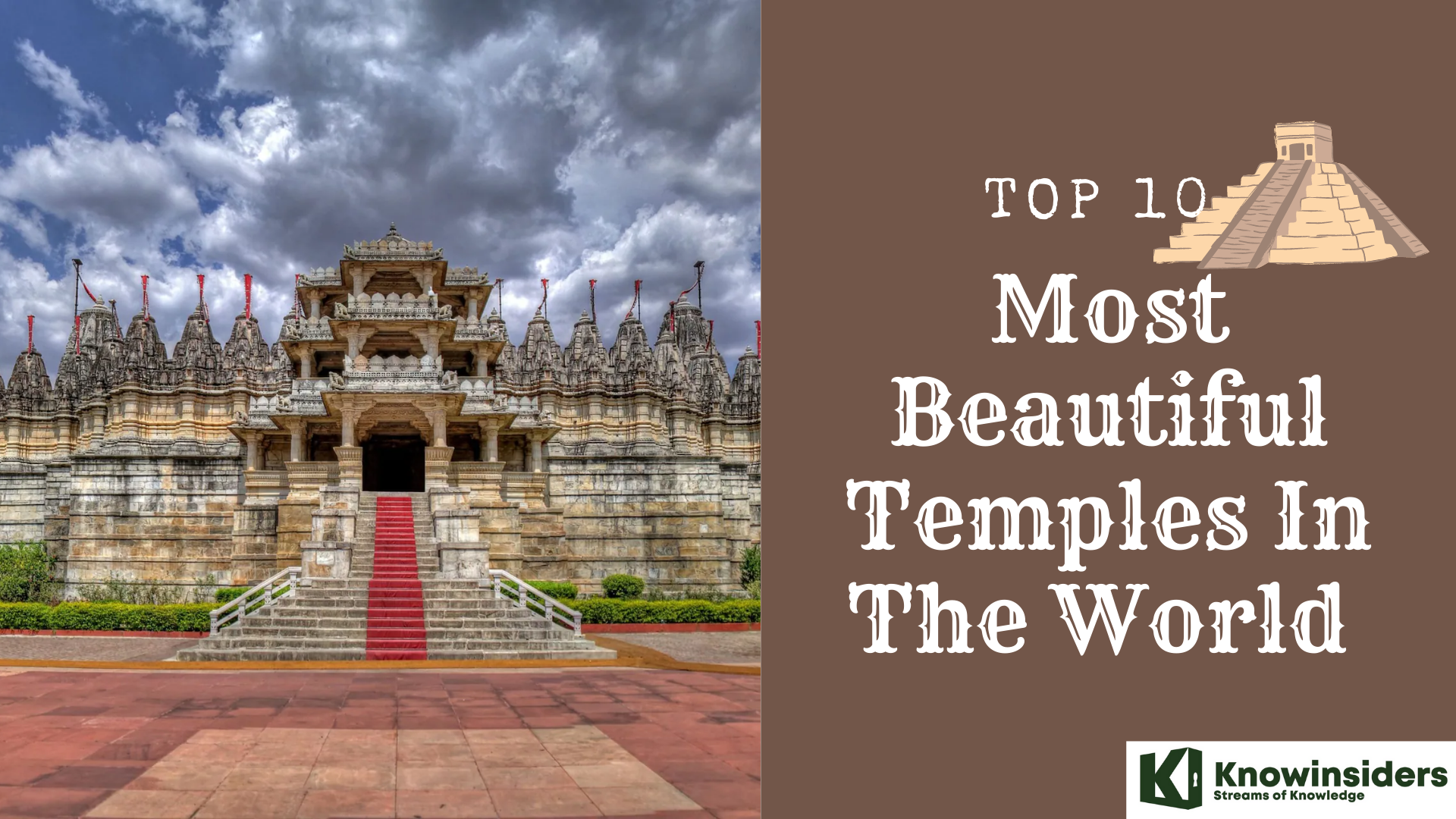 Top 10 Most Beautiful Temples in The World Top 10 Most Beautiful Temples in The World Check out this top 10 most beautiful temples in the world that you can pay a visit in the future in the article below. |
7. Sri Murugan Temple, London
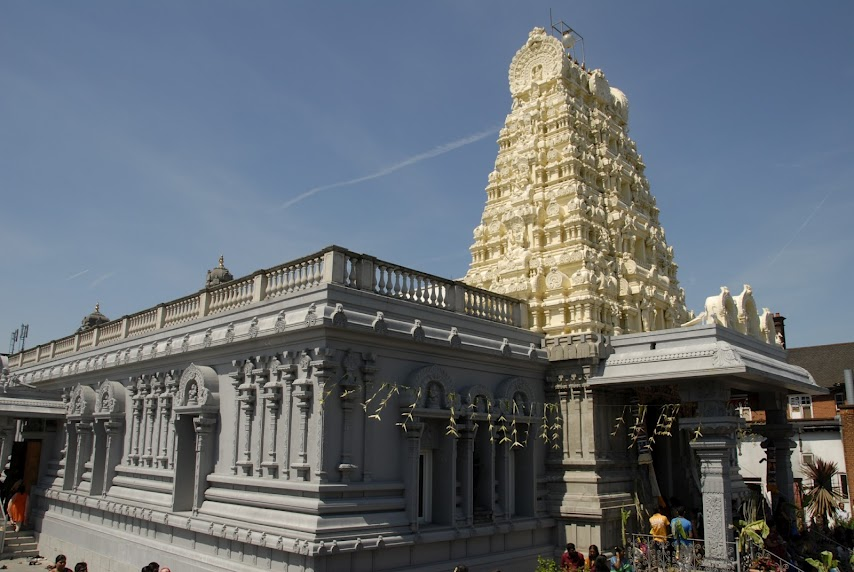 |
| Photo: University of Roehampton |
Location: 78 Church Road, Manor Park, London
A lavish 52-foot tower serves as the entryway to this Sri Murugan Temple, which leads to a roomy spiritual retreat. The floor is covered in polished Indian granite tiles that reflect the light delicately falling around the gods and goddesses embellished with glowing lamps, fruits, and flowers.
One of the two sons of Parvathi and Shiva, Lord Muruga, is honored in the center granite shrine. On his right and left, respectively, are his father Shiva and brother Ganesh.
The Vedas are respected in the subcontinent for around 8,000 years, and they are ancient Indian books that contain the legends of these gods.
The intricate designs were created by traditional Hindu stonemasons who skillfully sculpted the many forms of each deity on the outer walls of the shrines, which tower through the ceiling to represent the meeting of mortal and divine. The shrines are made of black granite that was shipped from India.
Hinduism acknowledges the existence of numerous deities because it has a belief in a single supreme god who is formless and can manifest in many ways, including as saints, sages, devotees, and in dreams.
The three facets of the holy trinity, Brahma, Shiva, and Vishnu, are held in the singular supreme lord, Lord Muruga, who is worshipped as such.
Deities ensconced in a number of tiny shrines carved onto the temple's marble walls represent the many faces of the supreme Being. Every deity has a special occasion for Puja (ritual worship), during which devotees pray to the many deities to meet their shifting requirements.
They bring gifts like fruit and flowers, which are sanctified by the gods and then given back by the priests, who also offered us fruit and flowers as we were leaving.
According to Hindu temple principles, the structure is constructed in line with a symbolic design created by Indian architect Sri Muthiah Sthapathi and chief priest Sri Naganathsivam Kurukkal.
6. Shri Sidhi Vinayagar Temple
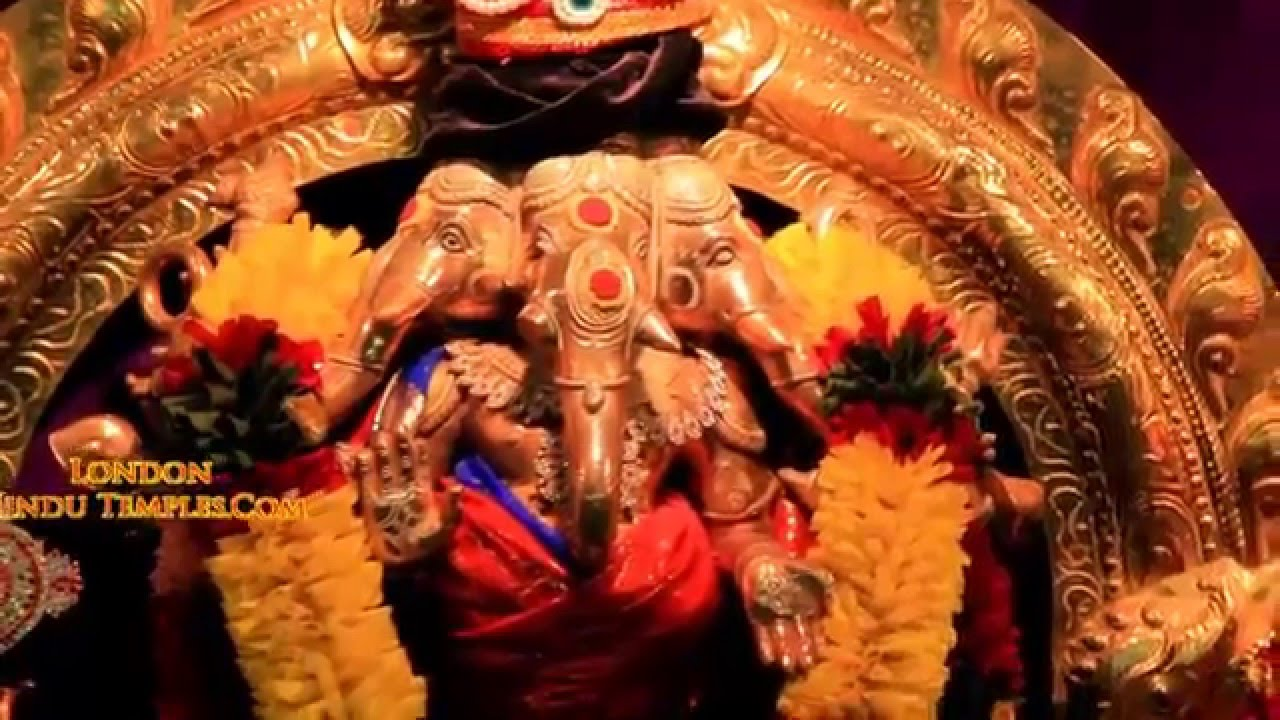 |
| Shri Sidhi Vinayagar Temple |
Shri Sidhi Vinayagar Temple is a Hindu temple dedicated to the Elephant God Ganesha. It opened in 2011. The temple premises has idols of Ganesha, Murugan, Shiva, Durga, Bhairava and Navagrahas. A new bigger temple is being constructed in the same premises which includes various Hindu Gods.
It is situated in George Eliot Road, off Foleshill Road, Coventry CV1 4HT and is easily reachable by the local buses. Daily Poojas are performed.
Coventry pillaiyar (கொவென்றி பிள்ளையார்) is yet another name for Coventry Shri Sidhi Vinayagar Devasthanam situated in the heart of England. The temple was founded by local devotees who is very much love with Lord Ganesha. The annual festival of the Temple (தேவஸ்தானம்) is conducted every year beginning with flag hoisting and continued for 10 days. Highlight of this annual event is chariots festival (தேர் திருவிழா) where Lord Ganesha is taken on a beautifully decorated cart pulled by devotees around designated streets of Coventry.
The Hindhu Art College, a wing of Temple Devasthanam, conducts a regular art and Language classes. They also host various community cultural events and attract all communities.
5. Shree Sanatan Hindu Mandir
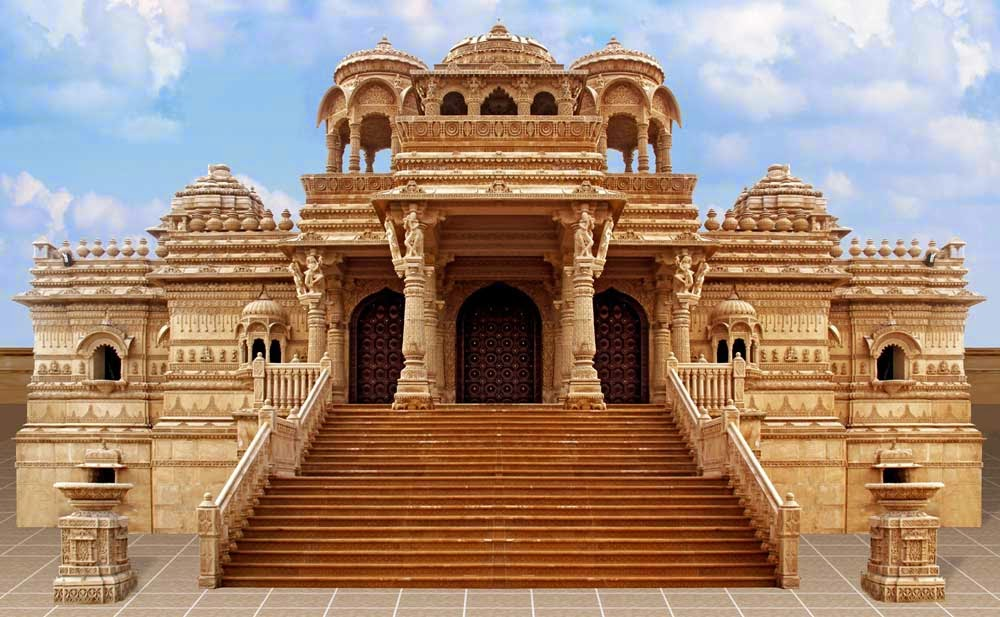 |
| Shree Sanatan Hindu Mandir - Photo: Getty Images |
The Shree Sanatan Hindu Mandiris the name of two Hindu temples in London, one situated off the Ealing Road in Wembley, in the London Borough of Brent and the other in Whipps Cross near Leytonstone. They are run by charity Shri Vallabh Nidhi UK.
The temples follow Sanatan Dharma, and in common with other temples called Sanatan which is the true name which was later referred to as Hindu.
Leytonstone temple
The temple in Leytonstone is called Shri Nathji Mandir and was inaugurated in June 1980. It has the following deities - Shri Ram, Shrinathji, Shiv Parivaar, Amba Mataji, Jalaram Bapa and Hanumanji.
Wembley temple
It took 14 years to construct, was completed in the summer of 2010, and is entirely composed of imported Indian limestone. It lacks any steel supports because it was built in accordance with Hindu holy book guidelines. The 2.4-acre plot is large (9,700 m2).
Before being airlifted to Britain and assembled, many of the temple's component parts were hand carved in the Indian town of Sola, in the Gujarat state. There were 41 deity statues made of marble that were made specifically for the mandir in India. The interior of the building is ornately decorated with carvings on the pillars and walls as well as various shrines that are painted with Hindu deities. The carvings depict a number of well-known religious figures and spiritual figures from different religions, including Mother Teresa and the Sikh Guru Nanak. The temple rises to a height of 66 feet (20 meters).
Shri Ganeshji, Shri Sahajanand Swami, Shri Amba Mataji, Shri Simandhar Swami, Shri Radha Krishna, Shri Ram Darbar, Shri Shrinathji, Shri Tirupati Balaji, Shri Shiv Parivar, Shri Jalaram Bapa, and Shri Hanumanji are among the gods in the temple.
The organization Shri Vallabh Nidhi UK gathered money to help build the temple (SVNUK).
Shri Vallabh Nidhi UK
With one of its goals being to "Advance the Hindu faith in conformity with the teaching of Shri Vallabh" (Vallabha Acharya), the founder of the Pushtimarg sect, the charity that operates the temples was established by Vaishnav Hindus in London. The temples, however, are meant to be interfaith. With the permission of Krishna Shankar Shashriji, the charity was formed by the late Shri Balmukund P Parikh and Shri Ramanbhai Patel of the six gham patidar community (Dadaji).
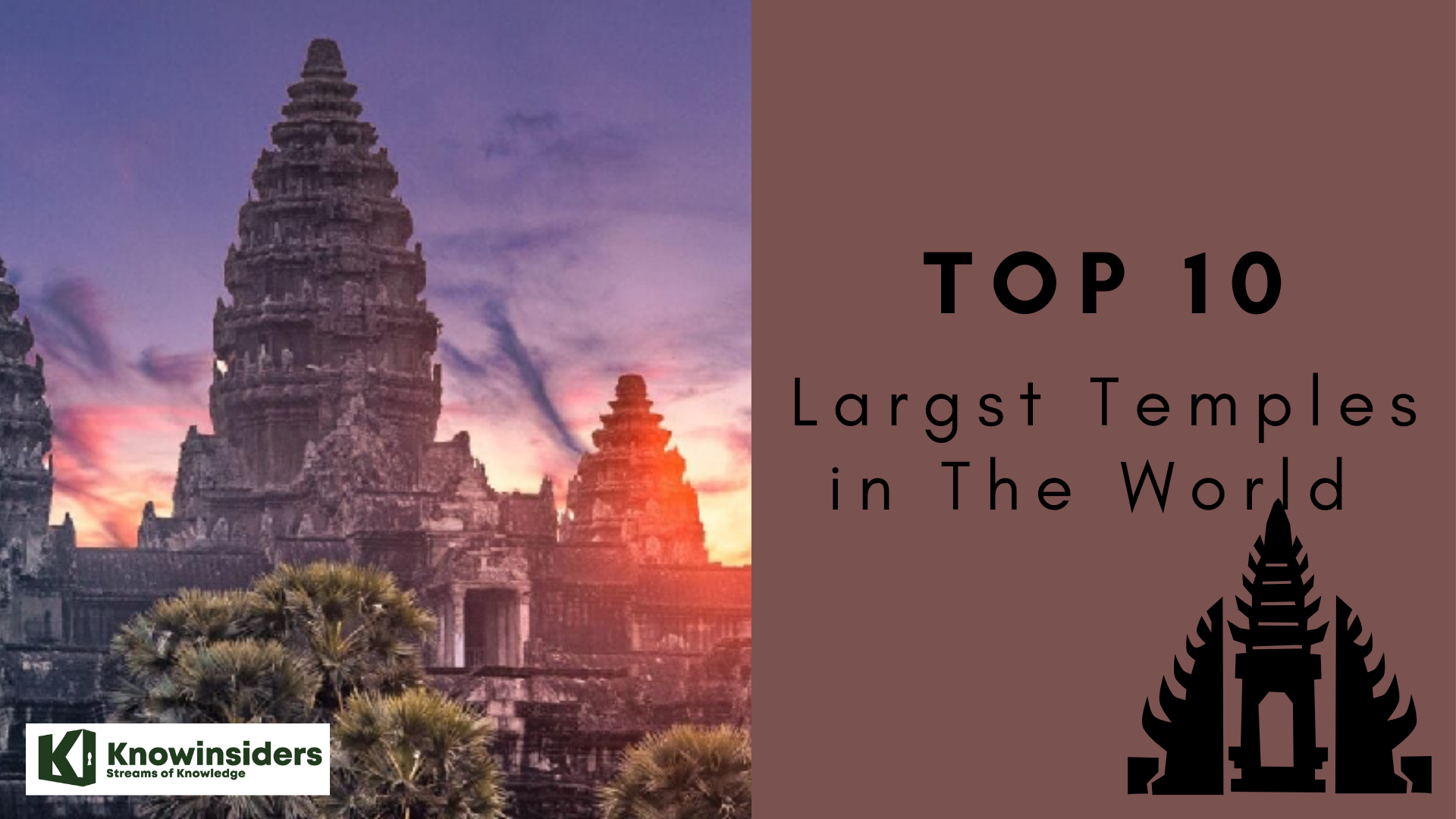 Top 10 Largest Temples In The World Top 10 Largest Temples In The World Hindu temples are sacred places, and are famous for their wonderful architectures and history. Check out this list of top 10 largest temples in the ... |
4. Bhaktivedanta Manor
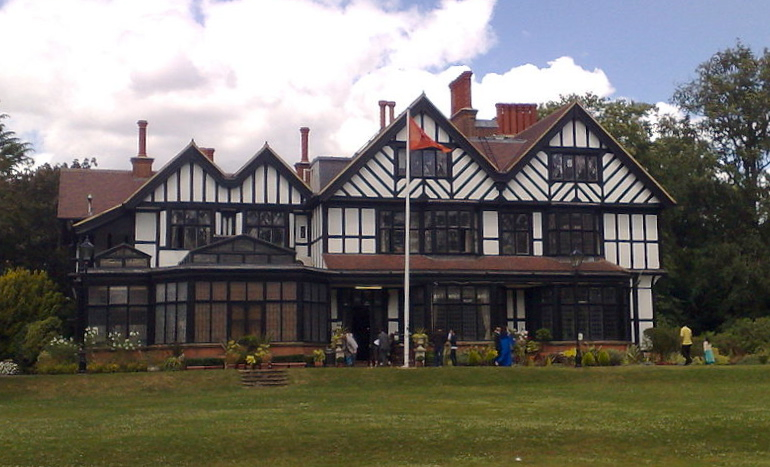 |
| Bhaktivedanta Manor |
A Gaudiya Vaishnava temple called Bhaktivedanta Manor is located in the English village of Aldenham, close to Watford, in the Hertfordshire countryside. The International Society for Krishna Consciousness (ISKCON), also known as the Hare Krishna movement, is the company that owns and manages the Manor. It is one of the most frequently visited Radha Krishna temples in Europe and the largest ISKCON property in the United Kingdom. The residence is a Grade II listing on England's National Heritage List.
The mansion, formerly known as Piggott's Manor, was given to the Hare Krishna community by former Beatle George Harrison in February 1973 because the Radha Krishna Temple in central London was unable to accommodate the burgeoning number of devotees. The estate was expanded by purchasing neighboring homes after the donation, which also contained 17 acres of land. ISKCON's founder-acharya, A.C. Bhaktivedanta Swami Prabhupada, and Harrison were good friends, and Harrison frequently paid him a visit at the Manor.
ISKCON launched a campaign to save Bhaktivedanta Manor from closure as a public temple in 1981 as a result of the site's fame, which increased visitation in Aldenham. The Department of the Environment authorized the construction of a road that would have circumvented the community in 1996 following a number of legal proceedings and appeals. With the new entrance, the Manor can now accommodate up to 60,000 guests for yearly religious celebrations like Janmashtami.
3. Radha Krishna Temple, London
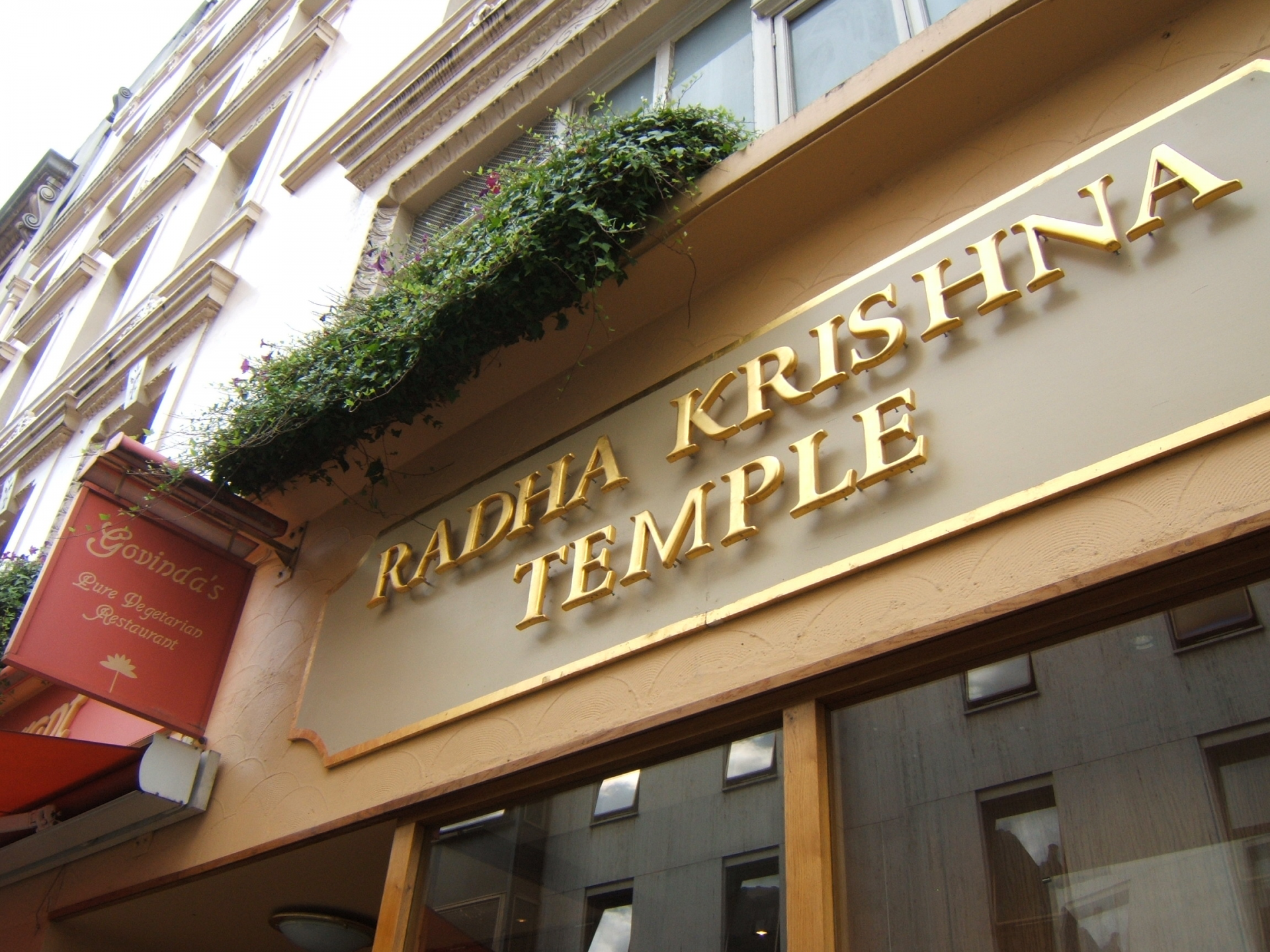 |
| Radha Krishna Temple - Photo: TempleTurohit |
The International Society for Krishna Consciousness (ISKCON) has its UK headquarters at the London Radha Krishna Temple, commonly known as the Radha Krsna Temple. Six devotees from San Francisco's Radha Krishna Temple were sent by ISKCON founder A.C. Bhaktivedanta Swami Prabhupada to establish a UK branch of the religion, and they built it in Bury Place, Bloomsbury, in 1968. George Harrison of the Beatles, who publicly allied himself with Krishna consciousness, helped the Temple gain notoriety. Devotees Mukunda, Shyamsundar, and Malati, three of the original six representatives in London, all went on to assume important positions in the fast expanding ISKCON organization.
The Temple's followers collaborated with Harrison to record an album of devotional music under the name Radha Krishna Temple (London), which was released in 1971 on the Beatles' Apple record label. These songs included "Hare Krishna Mantra," a worldwide smash single in 1969 that contributed to the Maha Mantra's Westernization, and "Govinda." The Radha Krishna Temple gained its first permanent location at Bury Place in downtown London with Harrison's financial assistance before purchasing Bhaktivedanta Manor, a rural estate in Hertfordshire. After legal disputes over the usage of the Bury Place location, the central London temple relocated to new quarters in Soho Square in 1979.
2. BAPS Shri Swaminarayan Mandir, London
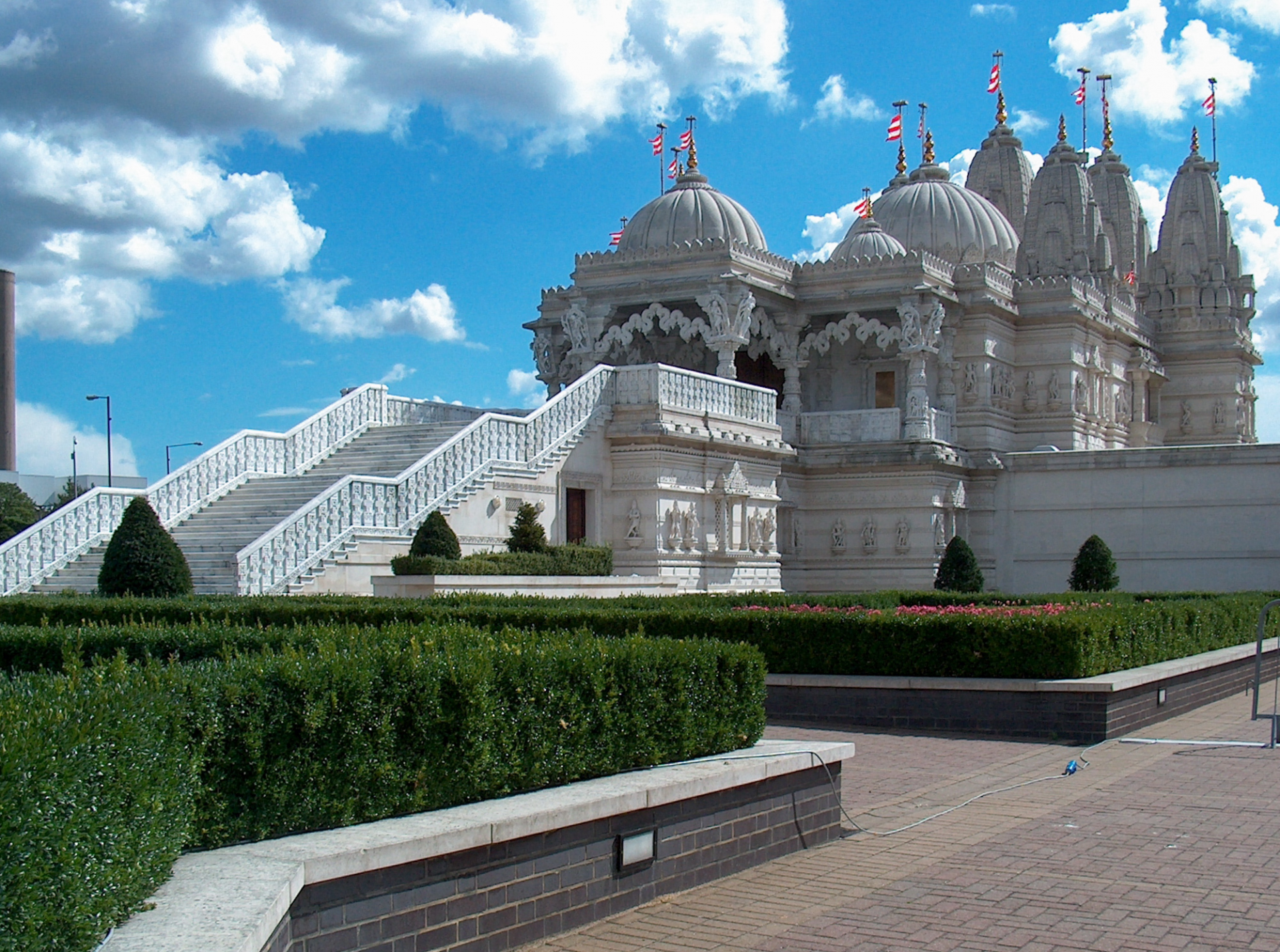 |
| BAPS Shri Swaminarayan Mandir - Photo: Wikipedia |
A Hindu temple called BAPS Shri Swaminarayan Mandir is located in Neasden, London, England. It is also frequently referred to as the Neasden Temple. The Swaminarayan mandir has been referred to as the first genuine Hindu temple in Britain because it was constructed fully utilizing traditional techniques and materials. It was also the first authentic Hindu stone temple in Europe, as opposed to secular structures that had been converted. It was established in 1995 by Pramukh Swami Maharaj and is a component of the Bochasanwasi Shri Akshar Purushottam Swaminarayan Sanstha (BAPS) organization. The temple complex also includes a cultural center with offices, a bookshop, a gym, and a permanent exhibit named "Understanding Hinduism."
The Temple and Haveli were wholly constructed and paid for by the Hindu community; the total project took five years to complete, while the actual building took only two and a half years. Construction work started in August 1992. The temple witnessed the largest concrete pour in UK history on November 24, 1992, when 4,500 tons were poured in under 24 hours to form a foundation mat that was 6 ft (1.8 m) thick. In June 1993, the first stone was placed, and the construction was finished two years later.
The mandir was listed as following in Guinness World Records 2000:
"The Shri Swaminarayan Temple in Neasden, London, United Kingdom, is the biggest Hindu temple outside of India. It was constructed by the 92-year-old Indian sadhu Pramukh Swami and weighs 2,000 tonnes of Italian marble and 2,828 tonnes of Bulgarian limestone, all of which were carried to India first to be carved by a crew of 1,526 sculptors. Building the temple cost £12 million."
Nonetheless, other BAPS mandirs overseas have outgrown it in size since 2000. The Hindu community built and paid for the mandir fully. Despite the mandir's construction taking only 2.5 years to complete, the overall endeavor took 5 years. Construction work started in August 1992. The temple set a record for the biggest concrete pour in the UK in November 1992 when 4,500 tons were used to pour 1.8 meters (5.9 feet) of concrete in 24 hours. In June 1993, the first stone was placed, and the construction was finished two years later.
Overview
June 1970: The first BAPS Swaminarayan Mandir in the UK was opened in a converted disused church in Islington, North London, by Yogiji Maharaj.
1982: Having outgrown the temple, the congregation moved from the Islington temple to a small, former warehouse in Neasden.
1990: BAPS was again in search of a building that could cope with the growing congregation, and plans for the present temple were made.
1995: They moved to their present temple, built on the site of a disused truck warehouse opposite the previous temple. The old temple building was retained and converted into Shayona, an Indian grocery shop and vegetarian restaurant.
1. Shree Ghanapathy Temple
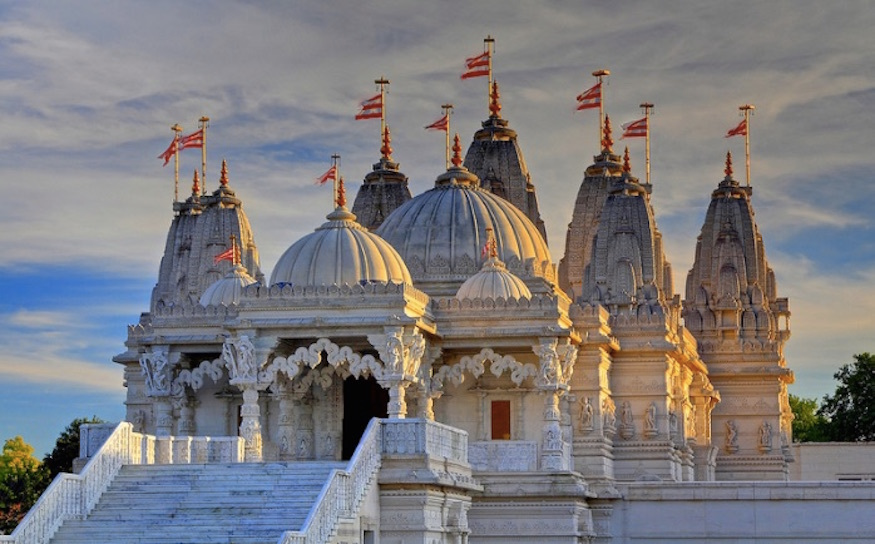 |
| Shree Ghanapathy Temple - Photo: Londonist |
A Hindu temple dedicated to the god Shiva, Shree Ghanapathy Temple, Wimbledon was founded in the 1980s in the southwestern London neighborhood of Wimbledon. Lord Ganesha is worshiped as the primary deity there. The Hindu pantheon also includes Durga (Parvati), Hanuman, Krishna, and many others. Sai Mandir, a temple of Bhagavan Sri Sathya Sai Baba, first opened its doors to the public in 1981.
This building was the very first Hindu temple in Europe to be dedicated (1981).
Early on in the temple's history, its leaders recognized the critical importance of indoctrinating the next generation in Hindu values.
The temple's leaders also hoped the kids would get a more profound appreciation for their religion. Classes have been held at the Sai Mandir for a long time, instructing young people in religious studies, Sanskrit prayers, and the singing of Bhajans (devotional melodies). Local governments and Age Link organizations facilitate the volunteering.
Classes in music, dancing, and yoga are just a few of the offerings at the temple.
 Top 10 Most Beautiful Temples in The World Top 10 Most Beautiful Temples in The World Check out this top 10 most beautiful temples in the world that you can pay a visit in the future in the article below. |
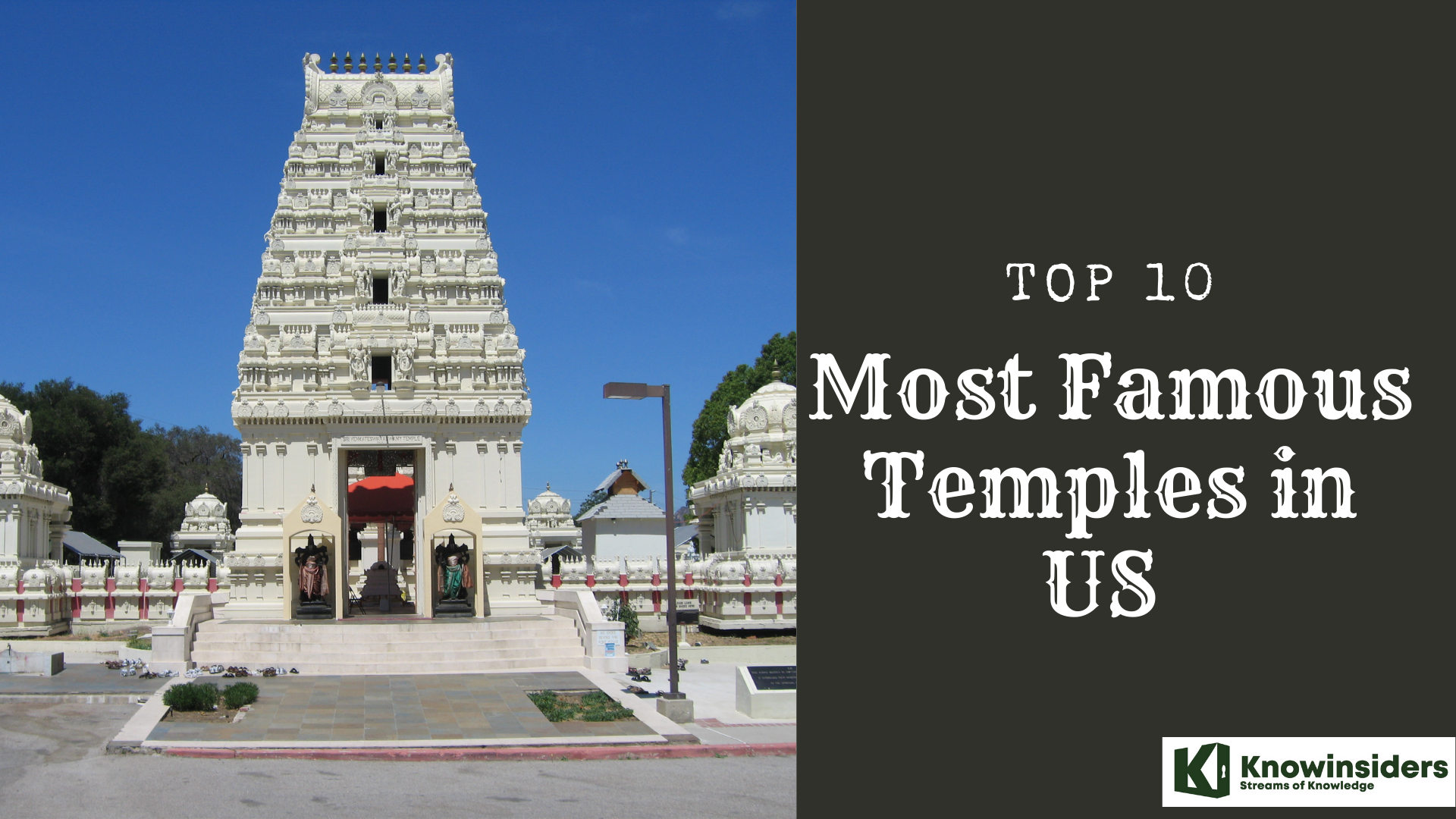 Top 10 Most Famous Temples in America Top 10 Most Famous Temples in America Since Hinduism has become one of the major religions in America, this country has been a place for many beautiful and majestic temples. Here is ... |
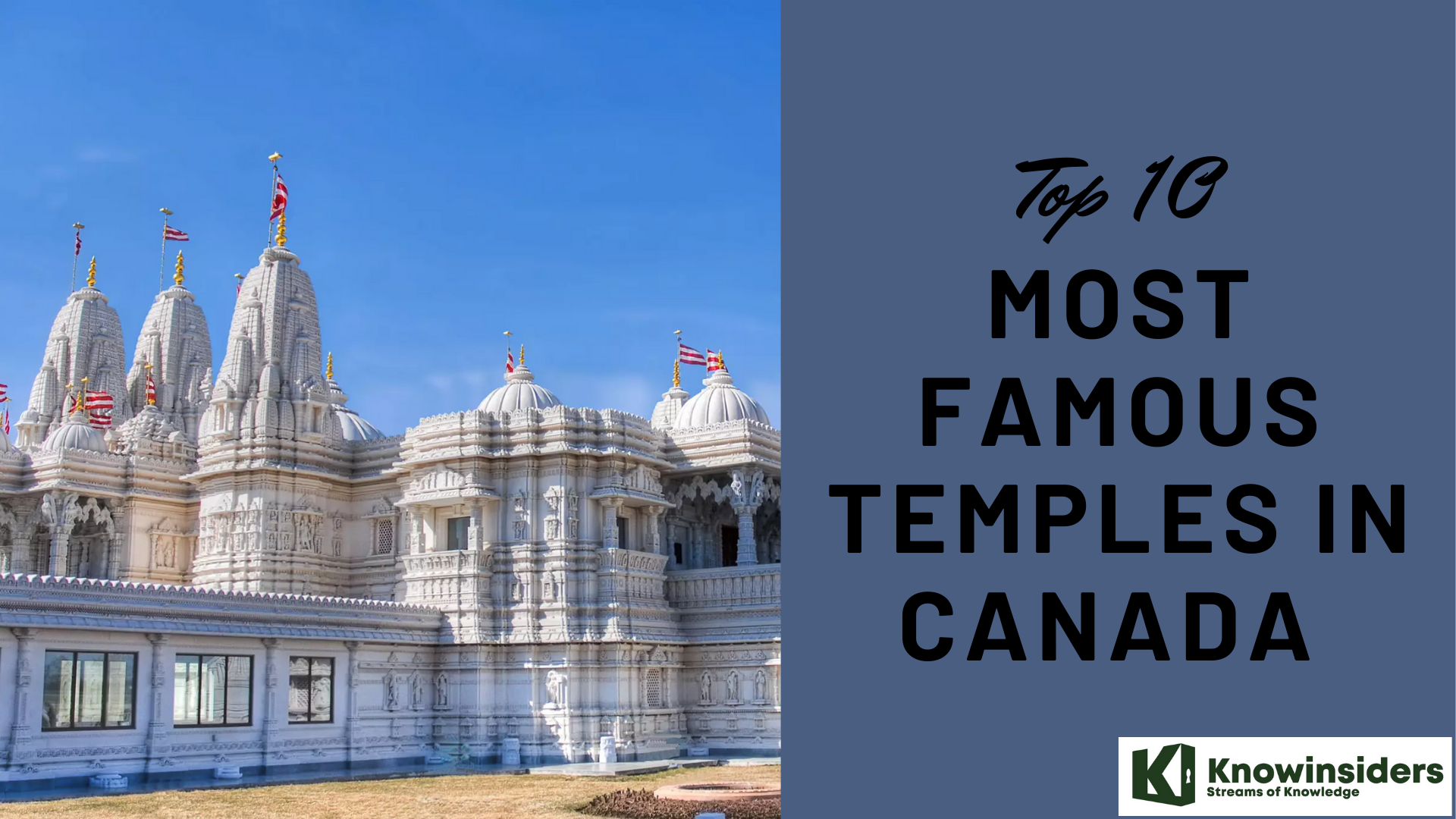 Top 10 Most Famous Temples in Canada Top 10 Most Famous Temples in Canada Let's check out this article below for top 10 most famous temples in Canada for your next religious trips in the future. |
 Top 10 Largest Temples In The World Top 10 Largest Temples In The World Hindu temples are sacred places, and are famous for their wonderful architectures and history. Check out this list of top 10 largest temples in the ... |



